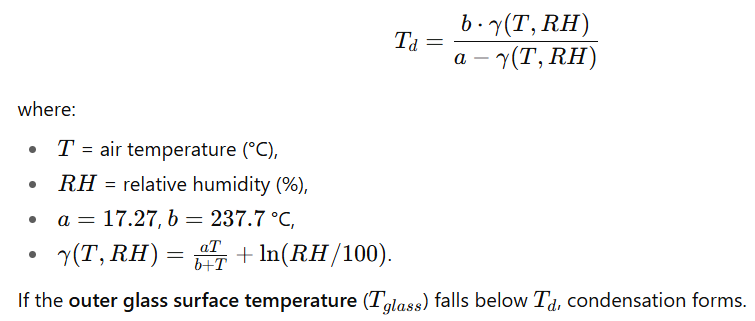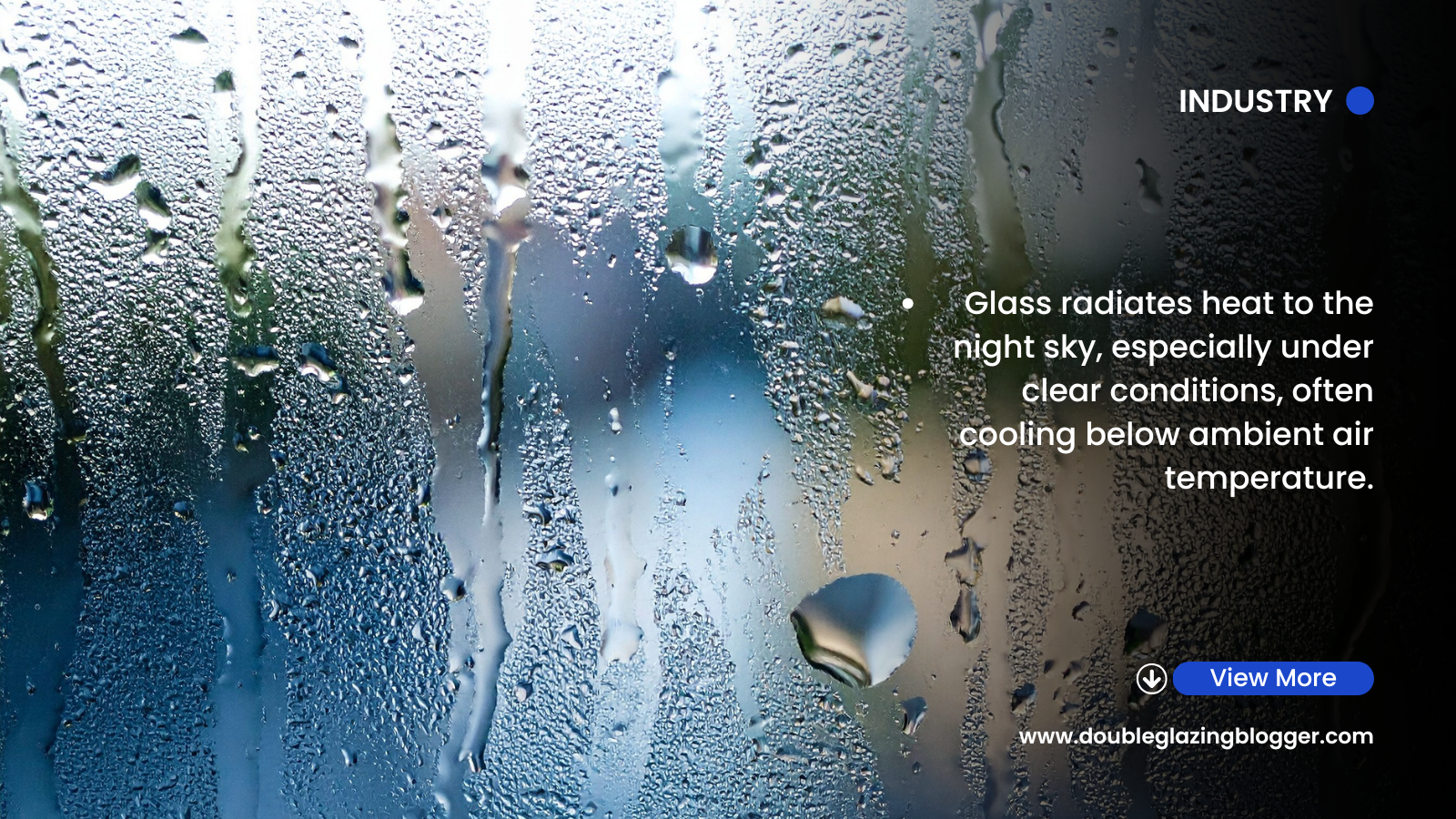Modern energy-efficient windows are designed to reduce thermal transfer between indoors and outdoors. While this improves comfort and lowers heating and cooling demand, it also creates a counterintuitive effect: external condensation. This phenomenon, most noticeable during spring and autumn mornings, can be explained through the interplay of surface temperature, ambient humidity, and thermodynamics.
The Thermodynamics of Condensation
Condensation occurs when air temperature drops to its dew point—the temperature at which air becomes saturated and can no longer hold all its water vapor. At this point, vapor condenses onto nearby cooler surfaces.
The dew point TdT_d can be approximated by the Magnus-Tetens formula:

Why Energy-Efficient Windows Show More External Condensation
-
Insulating Glazing Units (IGUs)
-
Double- and triple-glazed units contain low-emissivity coatings and inert gas fills (argon, krypton).
-
These reduce U-values (overall heat transfer coefficients), typically to 0.7–1.2 W/m²K compared with 2.5–3.0 W/m²K for single glazing.
-
Result: little indoor heat is conducted outward. The external pane remains colder, closer to ambient outdoor temperature.
-
-
Radiative Heat Loss at Night
-
Glass radiates heat to the night sky, especially under clear conditions, often cooling below ambient air temperature.
-
Older, less efficient windows gain compensating heat leakage from indoors, reducing the chance of condensation.
-
-
Spring and Autumn Weather Cycles
-
Nights are cool, days are warming, and relative humidity is often high (80–95% at dawn).
-
These conditions place below the morning dew point for several hours, encouraging droplet formation.
-
Why It’s Most Visible in Spring and Autumn
-
Spring: Rapid transitions from cool nights to warmer, moist mornings.
-
Autumn: Cooler surfaces from nighttime radiative cooling, combined with moist air as temperatures fall.
-
Summer & Winter:
-
In summer, outdoor temperatures remain high enough that dew points rarely exceed glass surface temperatures.
-
In winter, cold outdoor air holds little moisture, so dew points are too low for condensation to form.
-
Distinguishing External Condensation from Other Types
-
External surface condensation: Normal, seasonal, evidence of low U-value glazing.
-
Internal surface condensation (indoors): Caused by high indoor humidity and poor ventilation.
-
Interstitial condensation (between panes): Indicates IGU seal failure—argon gas has escaped and moisture has penetrated.
Mitigation Strategies
Although harmless, condensation may obscure views temporarily. Solutions include:
-
Hydrophobic coatings (e.g., TiO₂-based nanocoatings) to accelerate droplet dispersion.
-
Window placement considerations: North-facing and shaded elevations are more prone due to reduced solar gain.
-
Microclimate control: Reducing vegetation near windows lowers localized humidity.
Conclusion
External condensation on high-performance glazing during spring and autumn is a byproduct of physics, not a defect. It arises when the outer pane cools below the dew point due to:
-
suppressed conductive heat transfer (low U-values),
-
strong nocturnal radiative cooling, and
-
elevated morning humidity.
Rather than being a problem, this phenomenon confirms that the window unit is minimising heat loss, functioning as designed, and delivering the thermal insulation benefits that older glazing systems cannot.
Subscribe for FREE below to receive the weekly DGBulletin newsletter and monthly digital magazine!







